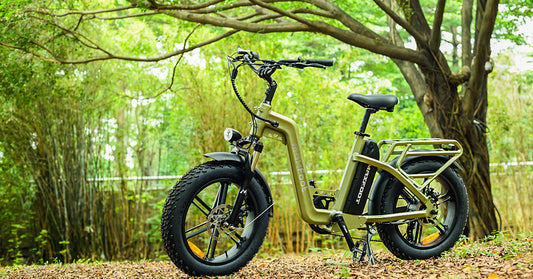Is cycling the most challenging sport in the world? The answer is no. While it presents its own set of difficulties, there are many other sports that require greater physical demands and mental toughness. However, cycling can be a complex topic, especially for inexperienced riders. Let's work together to improve our understanding and knowledge of cycling, and help foster a more informed and supportive cycling community.
We've gathered a collection of helpful tips for cyclists that we'd love to share with beginners and enthusiasts alike. While we may not have all the answers or be aware of every factor, we believe that by collaborating with others, we can build a comprehensive knowledge base to benefit new riders. We welcome you to join our Facebook group and contribute your insights to help make cycling more enjoyable for everyone.
Don't Fixate on Frame Size
While manufacturers typically design bike frames with the average person's parameters in mind, these standards can vary across different brands. As a result, it's important not to place too much emphasis on these parameters when selecting a bike. For example, if you've been riding a 19-inch frame for a while, that doesn't necessarily mean you'll prefer the same size from another brand. Keep in mind that there are other factors, such as geometry and fit, that can impact your riding experience and comfort.
Why Cadence Matters: A Key Tip for Cyclists
While some studies suggest that a lower cadence can generate more power, they fail to consider the impact on knee health. Research focusing on knees has shown that a higher cadence can reduce the risk of injury and improve joint comfort. While the ideal cadence for cycling is generally considered to be around 90 revolutions per minute, it can vary based on individual preferences and factors such as fitness level and terrain.
Choosing Suitable Cycling Apparel
While expensive gear such as helmets, lights, wheels, saddles, and grips can improve your cycling comfort, nothing compares to the experience of wearing well-designed cycling apparel, particularly shorts. High-quality chamois in cycling shorts can significantly enhance your riding comfort, and the feeling of wearing properly designed clothing is unmatched. Once you try ordinary clothes, you'll realize that there's no going back. The difference is truly remarkable.
Overcoming Fear and Navigating Public Roads
By following the basic rules of the road, cycling on public roads can be a breeze. Make sure to yield to other vehicles when entering intersections, obey flashing lights, prioritize pedestrian safety, establish eye contact with uncertain drivers, communicate with the flow of traffic, and signal your maneuvers. By implementing these guidelines, you can enjoy a pleasant and stress-free cycling experience.
The Importance of Building Endurance and Speed Gradually
Perfection doesn't happen overnight, so don't be discouraged if you don't see immediate results. Relax and have fun, and progress will come naturally. Even experienced cyclists understand the importance of gradual improvement and don't begin each season attempting to break records. So instead of riding with a tense jaw and gritted teeth, take a deep breath and enjoy the journey towards your goals.
Making the Right Investment
It's important to make informed decisions when investing in a bike, taking into consideration the intended use, quality, and budget. While it's tempting to spend as much money as possible, a more effective approach is to allocate funds wisely based on your needs and goals. By taking the time to research and compare options, you can make a smart investment that will provide the best value for your budget.
Maintaining Your Bike
A well-maintained bike performs better, no matter the conditions or terrain. Neglecting your bike can lead to various issues and make your rides more challenging than they need to be. This is especially true for MTB bikes with good forks, which require particular attention. Even minor neglect can cause damage to the valuable coating, leading to poor performance and costly repairs. However, regular maintenance can prevent these problems and extend the life of your bike, saving you money in the long run.
Use Gears Instead of Straining Your Muscles
It's important to use your gears instead of straining your muscles. Your knees will thank you for it! Always shift before reaching a hill, after climbing, and on flat roads to maintain a comfortable cadence. If you find yourself wobbling on the saddle due to pedaling too fast, slow down. When climbing, shift to a gear that allows for a higher cadence, rather than forcing your legs to push harder. This approach will not only protect your legs from injury, but also improve their health. Remember, pedaling harder doesn't necessarily make your legs stronger or bigger. For gym workouts, you'll need to follow a different set of guidelines.




